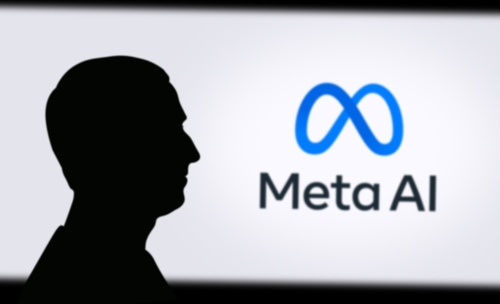REFILE-LIVE MARKETS-Friday's terrible, no good, very bad data: Payrolls, PMI, UMich, construction spending

Welcome to the home for real-time coverage of markets brought to you by Reuters reporters. You can share your thoughts with us at markets.research@thomsonreuters.com
FRIDAY'S TERRIBLE, NO GOOD, VERY BAD DATA: PAYROLLS, PMI, UMICH, CONSTRUCTION SPENDING
Stocks went ker-splat on Friday following a dismal batch of economic indicators, headlined by the much-anticipated July employment report's steep surprise to the downside.
The U.S. economy added just 73,000 jobs in July, USNFAR=ECI, falling 33.6% shy of analyst expectations.
If that weren't bad enough, the May and June payroll adds were revised downward by 258,000.
This marks the eighth downside surprise in the past 12 months, and with the revisions, it was the fifth reading below 100,000 over the past year, widely considered to be the minimum monthly gain to keep up with the population.
Digging beneath the headline, goods-producing, manufacturing and government sectors shed more than 10,000 jobs each.
On a net basis, the services sector was responsible for every single private sector job add, and then some.
“The cracks in the labor market have widened substantially and add further pressure on the Federal Reserve to lower interest rates and support the dissenting Fed Governors’ views that the FOMC should have lowered rates this week," writes Kathy Bostjancic, chief economist at Nationwide. "Many companies remain in a holding pattern and are hesitant to hire new workers amid heightened uncertainty about the impact of tariff policies on economic growth."
The report also gave markets their first glimpse at July inflation, showing average hourly wages rose as expected by 0.3% on a monthly basis, an acceleration from June's 0.2% growth.
Year-over-year, wages increased 3.9%, or 0.1 percentage point hotter than June's upwardly revised 3.8%.
Combined, a weakening labor market and rising wage inflation send a potential stagflationary signal.
"The risk of stagflation has risen meaningfully," says Olu Sonola, head of U.S. economic research at Fitch Ratings. "Inflation is drifting further from target, private sector economic growth has slowed materially, and the labor market has just sounded a warning bell. The Fed’s task has become significantly more complex."
As economists predicted, the jobless rate USUNR=ECI inched higher to 4.2%.
At the same time, the labor market participation rate continued to deteriorate, shaving off 10 basis points to 62.2%, the lowest reading since December 2022.
As a rule, when workers leave the labor force, the unemployment rate goes down, as they are no longer counted among the unemployed.
The fact that fewer Americans are in the workforce and the unemployment rate is rising, is a fairly sure sign of a softening labor market.
The average unemployment duration ticked up to 22.9 weeks, or 1.4 weeks longer than in June, which jibes with souring labor market confidence.
Pivoting to manufacturing, U.S. factory activity contracted last month at a steeper pace than analysts predicted.
The Institute for Supply Management's (ISM) purchasing managers' index (PMI) USPMI=ECI dropped a full point to print at 48.0, instead of improving to 49.5 consensus.
The index now sits 2 points below the magic PMI level of 50, the dividing line between monthly contraction and expansion.
Wandering into the weeds, new orders and production showed modest improvement, while employment and inventories worsened.
Prices paid - an inflation predictor - slowed down 4.9 points to a still-elevated 64.8.
"The new-orders-to-inventories ratio continues to point to the manufacturing sector remaining very weak in the months ahead, while the production index is consistent with output rising modestly rather than booming," Oliver Allen, senior U.S. economist at Pantheon Macroeconomics. "Moreover, the employment index dropped to its lowest level since June 2020."
S&P Global also released its final take on June manufacturing PMI USMPMF=ECI, which showed the sector improving slightly to a barely-contractive 49.8.
The mood of the U.S. consumer, who shoulders more than two-thirds of the U.S. economy, inched slightly higher this month compared to June according to the University of Michigan USUMSF, but was unexpectedly revised a tad lower from the preliminary reading posted a few weeks ago, to 61.7 from 61.8 from the previous.
While survey respondents' assessment of their current condition was a tad sunnier, near-term expectations deteriorated.
And near-term inflation expectations were warmer than originally reported. Participants see annual inflation at 4.5% a year from now, substantially hotter than the 2.8% core PCE reading released on Thursday.
Finally, expenditures on construction projects USTCNS=ECI unexpectedly fell in June by 0.4%, a repeat of May's 0.4% drop.
Analysts estimated no change.
Delving deeper into the Commerce Department's data, spending on residential projects fell by 0.7%, bringing a year-on-year drop in homebuilding expenditures to 6.2%.
Outlays by the private sector dipped by 0.5%, only slightly mitigated by a 0.1% uptick in government-funded projects.
(Stephen Culp)
*****
EARLIER ON LIVE MARKETS:
U.S. STOCKS TUMBLE IN EARLY TRADE AFTER JOBS DATA, AMAZON RESULTS CLICK HERE
U.S. STOCK FUTURES RED, YIELDS SLIDE, AFTER LATEST JOBS DATA CLICK HERE
EVEN DEALS DON'T BRING MUCH TARIFF CERTAINTY CLICK HERE
PAYROLLS: WHAT TO EXPECT ACROSS ASSETS CLICK HERE
STOXX SET FOR BIGGEST WEEKLY FALL IN FOUR MONTHS CLICK HERE
EUROPE BEFORE THE BELL: TARIFF JOLT CLICK HERE
MORNING BID: 'TARIFFS - USE THIS VERSION, PLEASE' CLICK HERE











.jpg)
